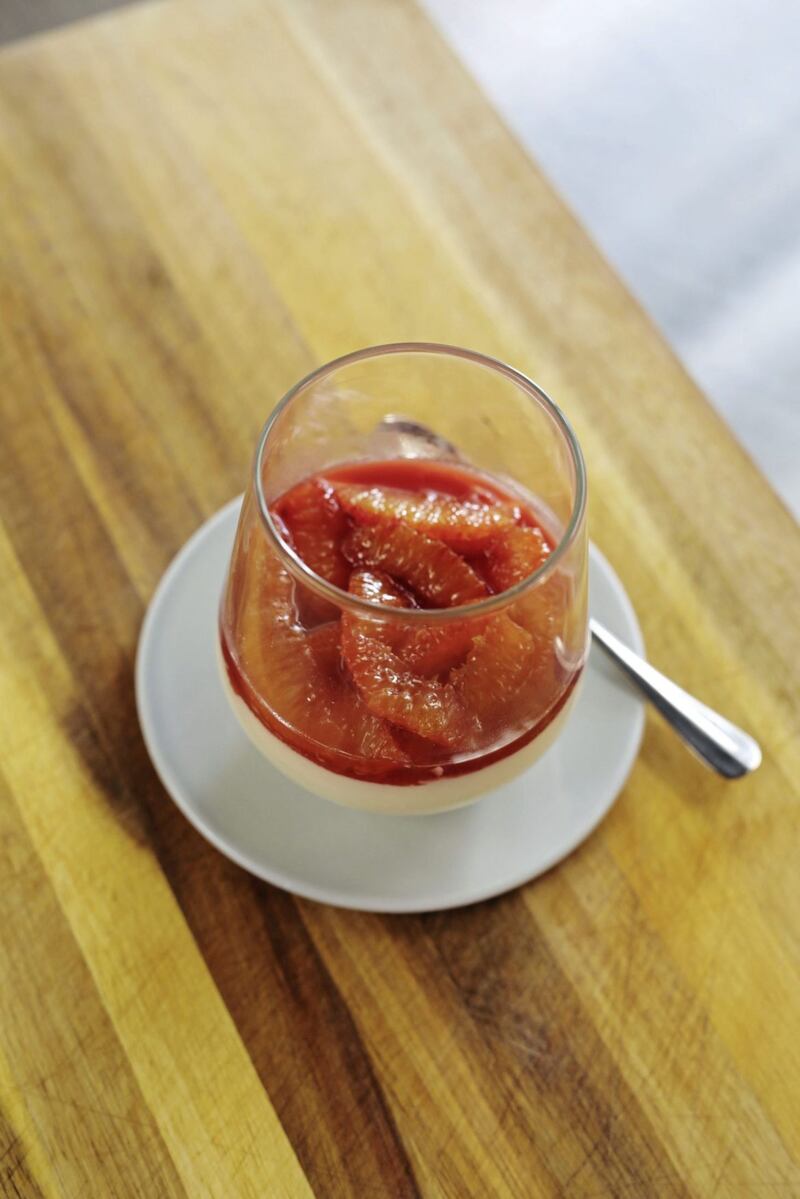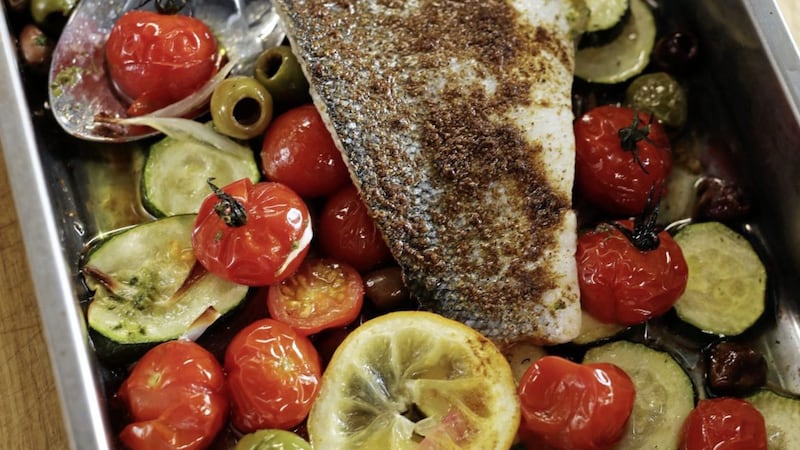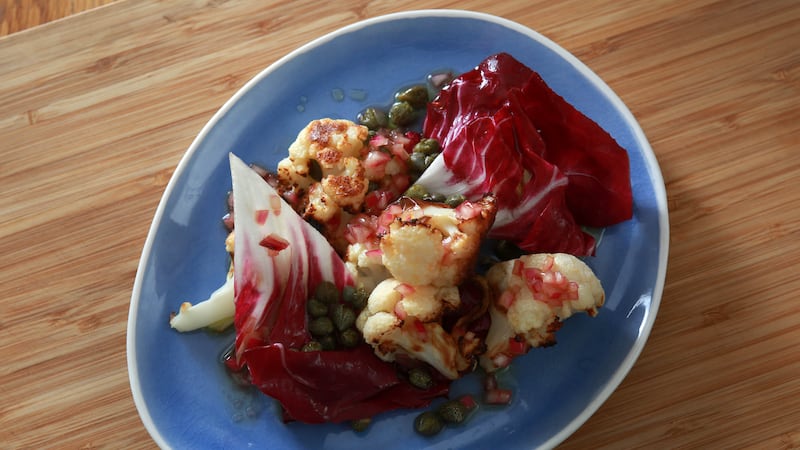THIS week's recipes are two cookery school favourites - one from our spiced Moroccan cookery school, and the second from one of our Italian classes.
The harissa seabass main course is surprisingly simple to cook, and I tend to serve this with roasted potatoes and a salad. Most customers think that using spices on delicate fish can be overpowering, but when used correctly, it really does enhance the flavour.
The same goes for the milk pudding recipe. This is a traditional panna cotta recipe from our popular Italian cookery class, matched with a blood orange syrup.
If you would like to master these recipes, get yourself booked in to one of our classes at Waterman House.
For more information, or to book an experience at the Waterman Cookery School, visit cookinbelfast.co.uk.
HARISSA SEABASS
(Serves 4)
100g potatoes, thinly sliced
1 courgette, thinly sliced
1 lemon, thinly sliced
1 red onion, skin off, thinly sliced
1 bunch cherry tomatoes, halved
1tbsp olive oil
Salt
Freshly ground pepper
1tbsp harissa
1 large sea bass
50g back olives, pitted
METHOD
Start by preheating the oven to 180C.
In a large roasting tray, layer the sliced potatoes, courgette, lemon, red onion and tomatoes and drizzle with olive oil. Season with salt and pepper to taste and pop into the oven for 30 minutes.
Ensure the seabass has been cleaned and gutted by a fishmonger.
Spread the harissa onto the skin of the seabass on both sides before placing the fish on top of the vegetables in the roasting tray. Top with olives and place back into the oven for a further 10 minutes.
Serve in the tray with a wedge of lemon and some small roasted potatoes.

MILK PUDDING WITH BLOOD ORANGE SYRUP
(Serves 4)
3 leaves gelatine
2tbsp caster sugar
200ml double cream
250ml milk
50ml buttermilk
Blood orange topping:
3 large blood oranges
2tbsp caster sugar
4tbsp Campari
METHODS
This dessert is best served in a glass, but if you prefer to use a ramekin you will need to grease it using rapeseed oil to ensure that you can remove the pudding whole from the mould.
Start by covering the gelatin leaves in cold water until soft.
Place the cream in a pot, adding 2 tablespoons of sugar and placing on a gentle heat, stirring until the sugar has dissolved.
Bring the cream to the boil and at the same time remove the gelatin from the water, squeezing any excess water away before adding it to the pan.
Add in the milk and buttermilk, stirring until the mixture is warm and combined.
Remove from the heat and sieve the mixture into the glasses or ramekins. Place in the fridge for 3 hours to set.
Blood orange topping:
Take the oranges and the peel and remove each segment from its skin. It is best to do this over a bowl to retain all of the juices.
Leave the orange segments to the side.
Place the sugar and the juices into a pan with the Campari and bring to a gentle heat. The sugar should dissolve, and the liquid should become syrup-like.
Once the glass is set, top with the segments and the liquid and place back into fridge to cool before serving.







